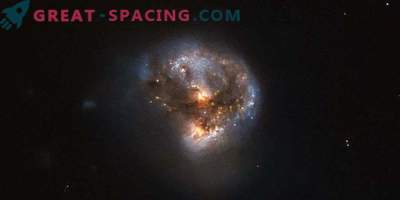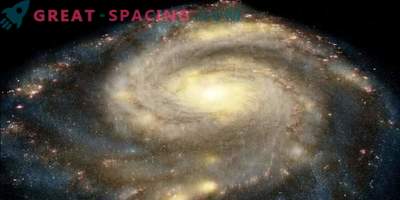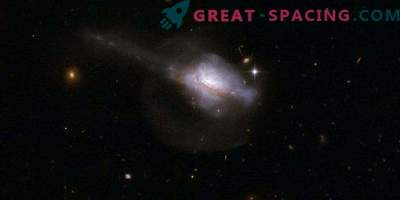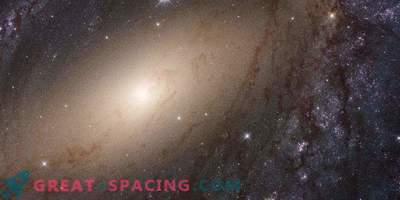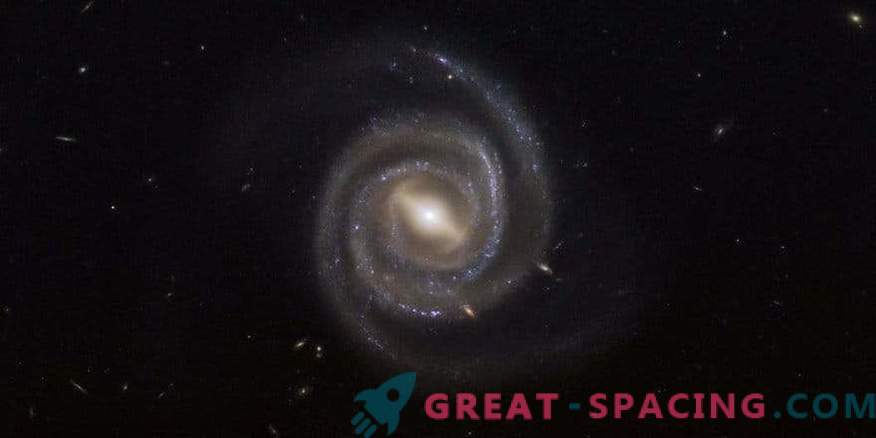
These pictures were taken with the Hubble telescope wide-angle camera 3 (WFC3). In front of you is the UGC 6093 galaxy, distinguished by its magnificent sleeves that leave the bar (passes through the center). It belongs to the spiral galactic type and acts as an active formation with an active galactic nucleus - a compact area in the galactic center where the material is absorbed by a supermassive black hole.
BUT UGC 6093 seems even more amazing. The galaxy functions as a large-scale astronomical laser, producing a glow in microwave wavelengths — duplicated by a megamaser. Such objects can be 100 million times brighter than the masers of our galaxy. The Hubble Camera monitors the light, covering the entire range of wavelengths - from the near-IR region, through the visible range and to UV. It has two channels that process the light and allow you to fully view the object. So the UV light shows galaxies with active star birth, and the IR tracks the redshift.
